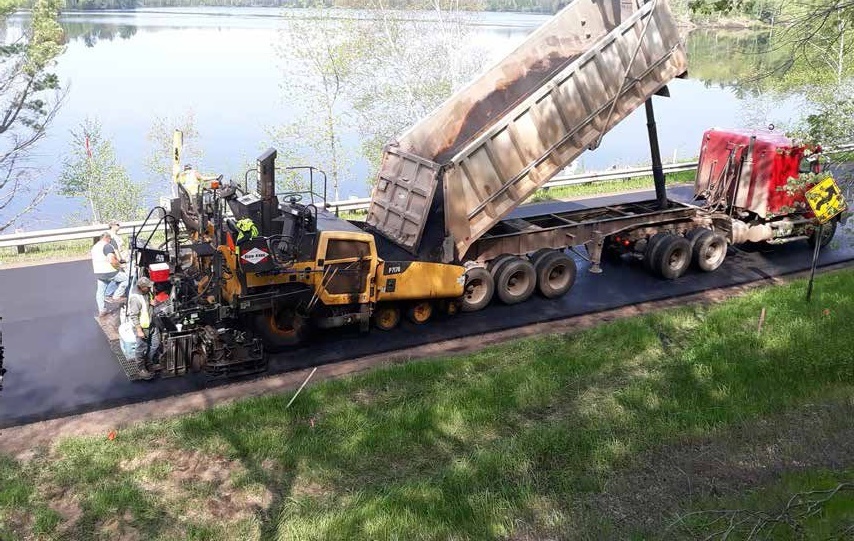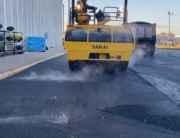Crumb Rubber Asphalt, Paving the Way Forward
Dickinson County Road Commission is testing the use of recycled tires in a colder climate. Ask the average lay person how road agencies can reduce road construction and increase pavement longevity and you’ll get a laundry list! Perhaps one of the most common fix-alls the public talks about is using all those recycled tires in crumb rubber asphalt. The Dickinson County Road Commission (DCRC) has been experimenting with this, one of the first to do so in a very northern climate.
Laying some rubber
The history of using recycled tires in roads, or engineered crumb rubber (ECR), is relatively short. Warmer southern states, including California, Florida, South Carolina and Arizona, have been using ECR in asphalt since the early 2000s.
While limited testing has been performed in cooler climates, DCRC claims to be the northernmost agency in Michigan to experiment with ECR.
“Dickinson has a culture that is open to exploring new ways to do things,” said Lance Malburg, PE, DCRC county highway engineer.

In the past, DCRC has partnered to test hot-in-place recycling in a cold climate, prefabricated chip seal and fiberized asphalt.
The newest project on DCRC’s horizon is the experimental ECR – hot mix asphalt (HMA) project on County Road 607, north of Iron Mountain. It’s a partnership between DCRC and Michigan Technological University, Michigan Department of Energy Great Lakes and the Environment, and the Dickinson County Bike Path Committee.
ECR Asphalt Research Goals:
- Demonstrate dry ECR + HMA are more easily controlled than “wet” liquid rubber road binder;
- Compare ECR HMA to traditional HMA in a cold climate; and
- Investigate cold weather cracking resistance of ECR HMA.

“Being so close to Michigan Tech, we try to take advantage of working with the University on new ideas,” Malburg said. That includes funding.
“This particular project came about because it was something a professor at Michigan Tech had been researching and wanted to study in the real environment. Dickinson put in $250,000, we received a $300,00 grant and Michigan Tech contributed $100,000. That’s relatively unheard of for the University,” Malburg said.
Bouncing into the details
The ECR-HMA project has three sections just over a half-mile long. Two segments are different percentages of “dry mix” ECR, and the third is the traditional asphalt control.
Dry mix crumb rubber asphalt is unique in that it’s crumbled and mixed into asphalt on-site rather than melted into the asphalt and then transported to the job site.
“There was a slight learning curve in application, but we figured it out,”Malburg said. Malburg hopes the project will demonstrate “dry mix” ECR-HMA is not only smoother, quieter and longer lasting than traditional asphalt, but also more economical and flexible in formula, allowing compositional changes on-site.

How’s it look?
The test project on CR 607 was completed this past June, so it will be many months until DCRC knows how effective ECR-enhanced HMA works. But early reports are good. “Michigan Tech did early audio tests and the road is definitely quieter,” said Malburg. And it’s not just the engineering that’s panning out positively. “With the process being more efficient, county residents can get out and enjoy improved roads more quickly than with traditional methods,” Malburg said.
Article Credit: County Roads Association of Michigan





